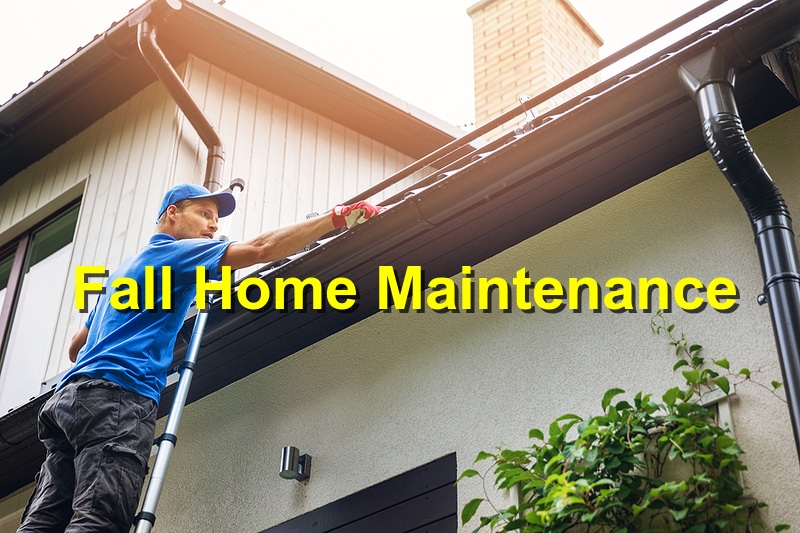As summer fades and cooler temperatures approach, fall is the perfect time to prepare your home for the upcoming winter months. A few essential maintenance tasks can help protect your property from harsh weather, improve energy efficiency, and prevent costly repairs. From inspecting gutters to servicing your HVAC system, here’s a guide to getting your property ready for fall.
1. Clean and Inspect Gutters
- Remove Debris: One of the most important tasks for fall home maintenance is cleaning out your gutters. Fallen leaves, twigs, and other debris can accumulate in your gutters and downspouts, leading to water damage and roof leaks. Make sure to clear any blockages to ensure proper drainage.
- Check for Damage: While cleaning, inspect your gutters for any signs of damage, such as cracks or loose sections. Repair or replace damaged gutters to prevent water from seeping into your home’s foundation or siding.
- Install Gutter Guards: Consider installing gutter guards to prevent future clogs. Gutter guards can help keep leaves and debris out while allowing water to flow freely.
2. Inspect the Roof
- Look for Damage: Fall is a good time to inspect your roof for any signs of damage, such as missing or damaged shingles, cracks, or worn flashing. Addressing these issues early can prevent leaks during winter storms.
- Trim Overhanging Branches: If there are tree branches hanging over your roof, trim them back to prevent damage from falling branches during heavy winds or snowstorms.
- Check Chimneys and Vents: If you have a chimney, make sure to inspect it for cracks, blockages, or signs of wear. It’s also important to ensure that vents are free of debris and properly sealed to avoid drafts.
3. Service Your HVAC System
- Schedule a Professional Tune-Up: Before the cold weather hits, it’s essential to have your heating system inspected and serviced by a professional. A well-maintained HVAC system runs more efficiently, saving you money on energy bills and reducing the risk of a breakdown during the winter.
- Change Air Filters: Replacing your air filters regularly helps improve indoor air quality and ensures your HVAC system runs smoothly. Dirty filters can restrict airflow, making your system work harder and less efficiently.
- Seal Drafts: Check around windows and doors for drafts. Sealing gaps with weatherstripping or caulk can prevent heat loss and reduce energy costs during the winter months.
4. Prepare Your Outdoor Spaces
- Winterize Outdoor Faucets: Before freezing temperatures arrive, disconnect garden hoses and drain outdoor faucets to prevent them from freezing and causing burst pipes. You may also want to install insulated covers over exterior spigots.
- Store Outdoor Furniture: Bring in or cover your outdoor furniture to protect it from the elements. This will help prolong its life and keep it in good condition for the next season.
- Clean and Store Lawn Equipment: As the growing season comes to an end, clean and store your lawn equipment, such as lawn mowers and trimmers. Drain fuel from gas-powered equipment to prevent damage during storage.
5. Check Windows and Doors
- Inspect for Drafts and Leaks: Drafty windows and doors can let in cold air, driving up your energy bills and making your home less comfortable. Inspect the seals around windows and doors and apply weatherstripping or caulk to close any gaps.
- Consider Upgrading Windows: If your windows are old or inefficient, consider upgrading to energy-efficient windows. These windows help keep your home warmer in the winter and cooler in the summer, saving you money on energy bills year-round.
6. Test Safety Devices
- Smoke and Carbon Monoxide Detectors: As you prepare your home for fall and winter, take the time to test your smoke detectors and carbon monoxide detectors. Replace batteries if necessary, and ensure all devices are functioning properly.
- Fire Extinguishers: Check that fire extinguishers are in good working order and easily accessible in case of an emergency. If you don’t have fire extinguishers, consider purchasing them for key areas of your home, such as the kitchen and garage.
7. Insulate Pipes and Attics
- Prevent Frozen Pipes: Insulating exposed pipes, especially in unheated areas like basements and crawl spaces, can help prevent them from freezing and bursting. Pipe insulation is a simple and cost-effective solution to avoid costly water damage.
- Improve Attic Insulation: A well-insulated attic can help keep your home warmer in the winter by preventing heat from escaping through the roof. Consider adding more insulation to your attic to improve energy efficiency and reduce heating costs.
8. Prepare Your Fireplace
- Clean the Fireplace: If you have a wood-burning fireplace, make sure it’s clean and free of creosote buildup before using it in the winter. A professional chimney sweep can ensure your fireplace is safe to use.
- Check the Damper: Ensure the damper opens and closes properly to prevent drafts and keep warm air inside your home.
Conclusion
Preparing your home for fall requires attention to both the exterior and interior. By taking proactive steps like cleaning gutters, inspecting the roof, servicing your HVAC system, and sealing drafts, you can safeguard your home against the colder months and avoid expensive repairs. A well-maintained home will not only provide comfort during the fall and winter but also improve energy efficiency and protect your investment in the long term.
References: AllSeasonGutters, LizMatthewsHomes




